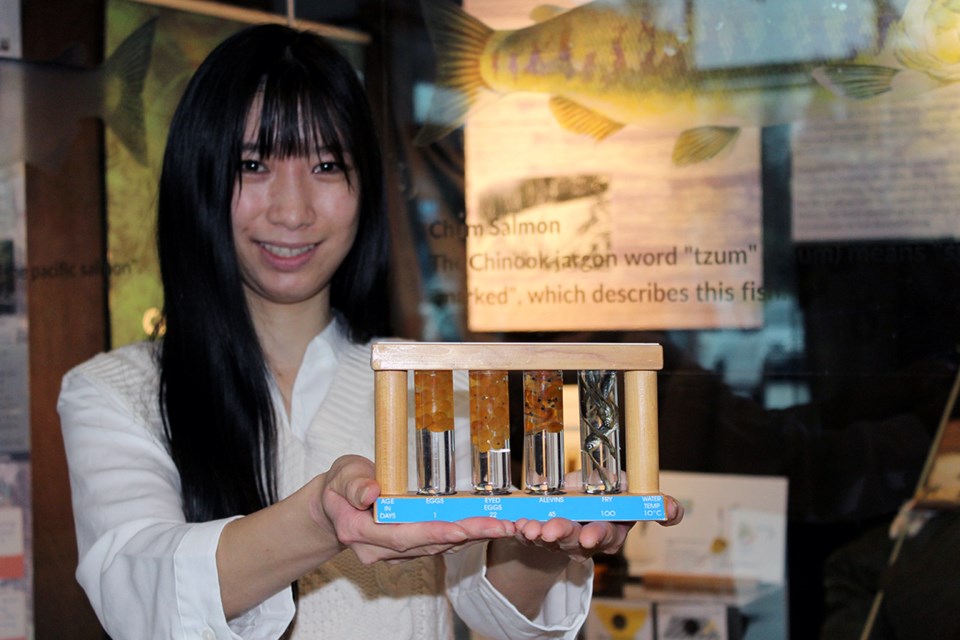Coquitlam’s relationship with fish has seen the good, the bad and the ugly.
From the turn of the 20th century when the Coquitlam Dam went up to supply drinking water to the rest of the region to the gravel extraction and logging, Coquitlam has come a long way to repair the damage to its fish stocks.
The evolution from the settlers’ neglect to today’s watershed and streamkeepers societies is highlighted in a new exhibit by Coquitlam Heritage that runs at the Poirier Sport and Leisure Complex until April 24, 2022.
Titled Beyond Fishing, the display was put together by summer student Shanna Cheng, a Vancouver resident whose internship with the heritage society ended today (Nov. 29).
A graduate of Emily Carr University of Art and Design and a UVic student of cultural resource management, Cheng told the Tri-City News she spent three months researching the topic.
She examined past reports from Fisheries and Oceans Canada, as well as BC Sports Fishing, the κʷικʷəƛ̓əμ (Kwikwetlem) First Nation and the Port Coquitlam and District Hunting and Fishing Club.
And she talked with environmental leaders in Coquitlam such as Ruth Foster — a co-founder of Centennial Secondary’s after-school Salmon Project that started in 1976 — and Robbin Whachell of the Hoy/Scott Creek Watershed Society.
Cheng also secured several Hoy/Scott Creek items for the show, such as vials of Pacific Salmon eggs, drainage signs and other paraphernalia.
As well, she sorted through Coquitlam Heritage’s collections to display a wooden fish net needle from the 1930s, a gaff hook and fishing knife (with a ruler to measure the fish size) from the 1940s, fishing rods from the 1950s and four red cedar fish floats that were hand carved in 1975 by Jane Ostenstad.
Still, Beyond Fishing’s oldest artifact is a fishing tackle kit from 1875 that was owned by Lambert LeRoux, a 56-year Maillardville resident; it is now part of Coquitlam Heritage’s collection.
Cheng said she chose to explore Coquitlam’s fishing history “because everybody has a relationship with fish, whether it be for food or respecting nature. I wanted the display to be inclusive.”
She also wanted to emphasize how popular the sport has been in the past, with fishers frequenting the Coquitlam, Fraser, Pitt and Brunette rivers that used to be teeming with salmon, sturgeon and trout.
“I don’t think we realize how much history there is on fishing in the city,” she said.
“Coquitlam is beside the Fraser, and we all have a responsibility to take care of the ecological system and the environment.”





